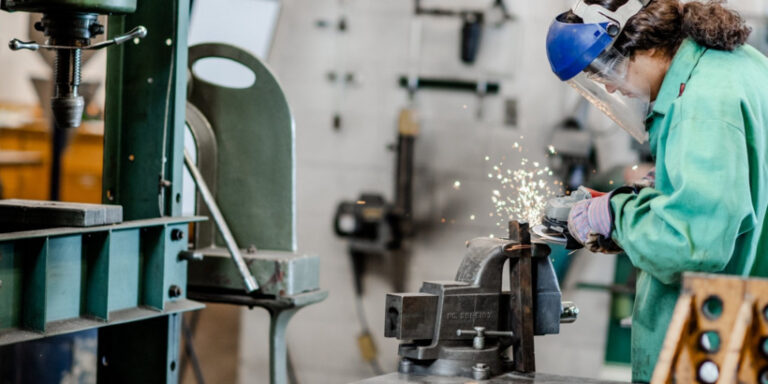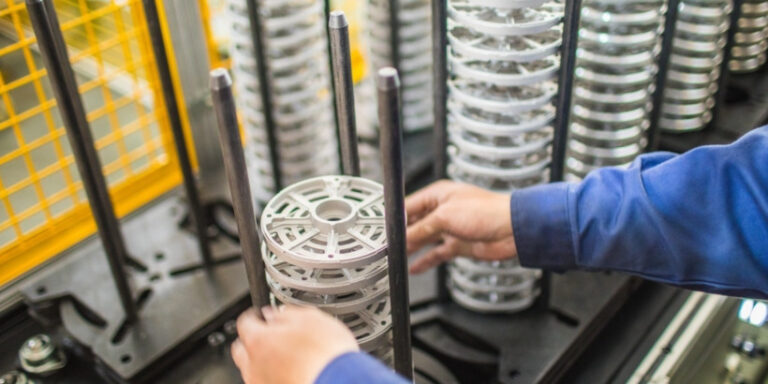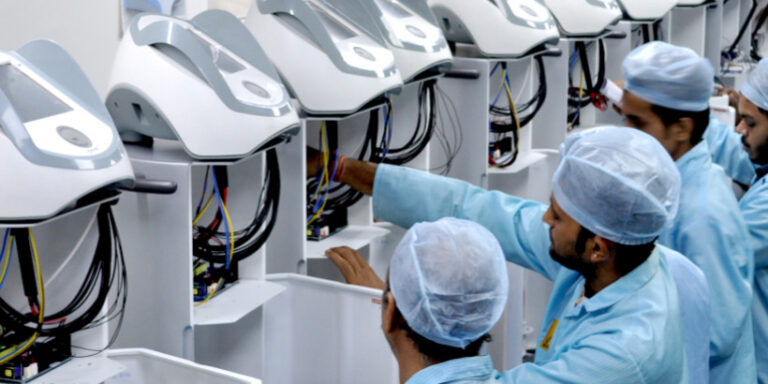The Importance Of Sustainability In Product Design And Manufacturing
Sustainability has become a buzzword for the modern world, and it’s not hard to see why. As we face mounting environmental challenges like climate change, pollution, and resource depletion, more and more people are waking up to the importance of sustainable living.
But sustainability isn’t just about recycling or using energy-efficient lightbulbs it goes much deeper than that. One area where sustainability is particularly crucial is in product design and manufacturing.
In today’s fast-paced consumer culture, products are often designed without much thought given to their impact on the environment or society at large. However, adopting sustainable practices in product design can have far-reaching benefits from reducing waste and emissions to saving resources and improving working conditions for those involved in production.
In this article, we’ll explore some of the key reasons why sustainability matters in product design and manufacturing both for individuals looking to make ethical purchasing choices and for businesses seeking to create products with a positive social and environmental impact.
What Is Sustainable Product Design?
When it comes to designing products, sustainability is key.
Sustainable product design takes into account the entire lifecycle of a product, from its creation to its disposal.
This means using eco-friendly materials and prioritizing energy efficiency throughout the manufacturing process.
As someone who cares about the environment, I believe that sustainable product design is essential for reducing our carbon footprint and preserving natural resources.
By choosing to invest in sustainable solutions, we can create products that not only benefit consumers but also contribute positively to our planet’s health and well-being.
Ultimately, incorporating sustainability into product design isn’t just good for business; it’s necessary for protecting the future of our world.
The Benefits Of Sustainable Design
Now that we understand what sustainable product design is, let’s dive into the benefits it brings.
As someone who cares about the environment and wants to make a positive impact on the world, I believe that incorporating sustainability in product design and manufacturing has numerous advantages.
Firstly, it allows companies to tap into green marketing strategies, which is becoming increasingly important as consumers become more conscious of their ecological footprint.
Secondly, sustainable products tend to have a longer lifespan, reducing waste and saving resources in the long run.
Lastly, utilizing eco-friendly materials and production methods can lead to cost savings for businesses through reduced energy consumption and waste management expenses.
By considering these benefits, we can see why there is an increasing push towards sustainability in product design and manufacturing today.
How To Reduce Waste And Emissions In Product Design
They say that “waste not, want not,” and this couldn’t be more true in the world of product design. The environmental impact of manufacturing and production is staggering, with emissions and waste causing irreparable harm to our planet. Thankfully, there are ways to reduce these negative effects while still minimizing costs and using green materials. By implementing sustainable practices into the design process, we can create products that are both functional and environmentally friendly. One effective method is by designing for disassembly: creating products that can easily be taken apart at the end of their life cycle so that parts can be reused or recycled. Another way is by utilizing eco-friendly materials such as bamboo, hemp, or recycled plastics instead of traditional materials like metal or concrete. Take a look at this table below to see just how much impact these small changes can make.
| Material | Energy Consumption (MJ/kg) | CO2 Emissions (kg/kg) | Water Usage (L/kg) |
|---|---|---|---|
| Steel | 25 | 1.9 | 35 |
| Aluminum | 220 | 6 | 55 |
| Bamboo | 4 | .3 | <1 |
It’s clear that even something as simple as choosing a different material can have a huge impact on sustainability efforts. So let’s continue to prioritize reducing waste and emissions in product design – it’s crucial for the health of our planet and future generations to come.
Strategies For Conserving Resources
Now that we know how to reduce waste and emissions in product design, it’s time to focus on strategies for conserving resources.
One effective approach is resource reuse – finding ways to repurpose or recycle materials so they don’t go to waste. This not only reduces the amount of raw materials needed but also minimizes environmental impact.
Another important strategy is product optimization, which involves designing products with a long lifespan and minimal environmental footprint. By creating products that are durable, efficient, and easy to repair or upgrade, we can minimize our use of resources while still meeting consumer needs.
Together, these approaches can help us build a more sustainable future where both people and planet thrive.
Improving Working Conditions In The Manufacturing Process
Now, let’s talk about the elephant in the room when it comes to sustainability and product manufacturing – working conditions.
As a society, we tend to overlook how our products are made and who is making them. It’s easy to forget that behind every item we purchase, there are people involved in its creation.
That’s why ethical sourcing should be a top priority for companies looking to improve their manufacturing processes. Workers deserve fair wages, safe working environments, and reasonable hours.
Moreover, energy efficiency can play an essential role in improving these conditions by reducing the amount of physical labor required in the production process. By implementing sustainable practices such as renewable energy sources or automated machinery, workers can focus on higher-skilled tasks that require less manual effort while still producing high-quality goods.
Ultimately, prioritizing worker well-being goes hand-in-hand with creating a more sustainable future for all of us.
The Role Of Consumers In Promoting Sustainable Design
I think it’s important for consumers to be educated on sustainable design, so that they can make informed decisions when it comes to buying products. Consumer demand for sustainable products is an important factor in driving companies to create more sustainable options. Consumer-driven innovation can also be a powerful tool in encouraging companies to create products that are more eco-friendly.
Education On Sustainable Design
Hey there!
When it comes to promoting sustainable design, education on the topic is crucial. By learning about green technology and eco-friendly materials, consumers can make informed decisions when purchasing products.
As a consumer myself, I think it’s important to understand the impact that our choices have on the environment. The more we know about sustainable design practices, the better equipped we are to support companies that prioritize environmentally friendly manufacturing processes.
Education also empowers us to advocate for change within industries that may not be as environmentally conscious. So let’s keep learning and pushing for sustainability in product design and manufacturing!
Consumer Demand For Sustainable Products
So, we’ve established that education is a key factor in promoting sustainable design.
But what happens once consumers know about eco-friendly materials and sustainable packaging?
Well, consumer demand for sustainable products can have a huge impact on the market.
As someone who cares about the environment, I try to seek out companies that prioritize sustainability when making purchases.
And I’m not alone – more and more people are looking for products that align with their values.
This increased demand sends a message to companies: if you want our business, you need to be environmentally responsible.
By voting with our wallets, we have the power to drive change towards a more sustainable future.
Consumer-Driven Innovation
So, we’ve talked about how education can promote sustainable design and how consumer demand for eco-friendly products can influence companies to be more environmentally responsible.
But it doesn’t stop there – consumers also have the power to drive innovation in sustainable design.
As a conscious consumer, I often look for companies that prioritize ethical sourcing and implement consumer-driven initiatives towards sustainability.
By supporting these innovative efforts, we encourage businesses to continue finding new ways to create products that are both good for us and good for the planet.
How Businesses Can Adopt Sustainable Product Design Practices
When it comes to adopting sustainable product design practices, businesses have a lot of options.
One key area to focus on is green packaging, which can reduce waste and help prevent harmful materials from ending up in landfills or oceans. By using biodegradable materials or reusable containers, companies can not only benefit the environment but also save money on shipping costs.
Another important practice is sustainable sourcing, which involves selecting materials that are responsibly produced and minimizing the environmental impact of production processes. This might mean working with local suppliers who use renewable energy sources or choosing organic cotton for clothing products.
By prioritizing sustainability in product design and manufacturing, businesses can make a positive impact on the planet while also appealing to consumers who value eco-friendly choices.
Conclusion
As a consumer, it’s easy to overlook the impact our purchasing decisions have on the environment and society. However, sustainable product design and manufacturing practices are crucial for reducing waste, conserving resources, improving working conditions, and promoting a healthier planet.
By adopting sustainable design practices, businesses can not only reduce their environmental footprint but also save money in the long run. Implementing strategies such as using eco-friendly materials, designing products with longevity in mind, and optimizing production processes can lead to more efficient use of resources and reduced emissions.
But it’s not just up to businesses to make changes; consumers play an essential role in promoting sustainability by choosing environmentally friendly products and supporting companies that prioritize ethical manufacturing practices.
By being mindful of our choices as consumers, we can help create a better future for ourselves and generations to come.
In conclusion, sustainability should be at the forefront of product design and manufacturing decisions. We all have a responsibility to do our part in protecting the planet while ensuring that workers are treated fairly throughout the supply chain.
Let’s work together towards creating a more sustainable world through conscious consumption and responsible production practices.






